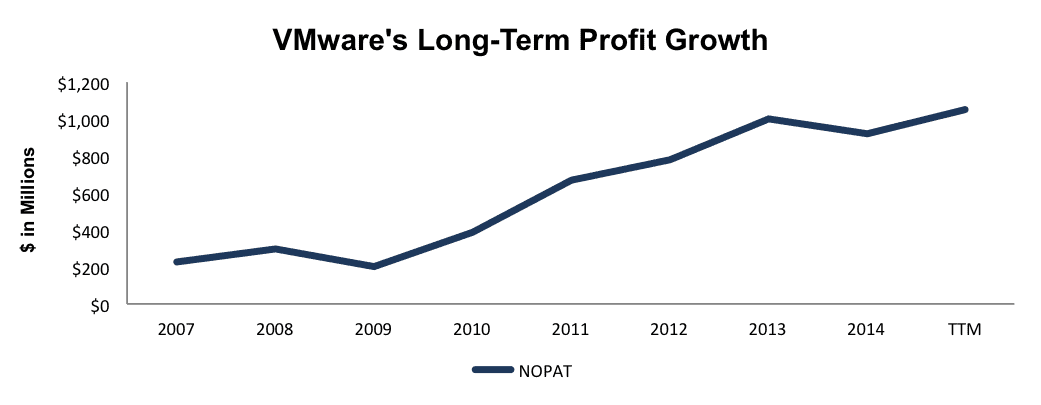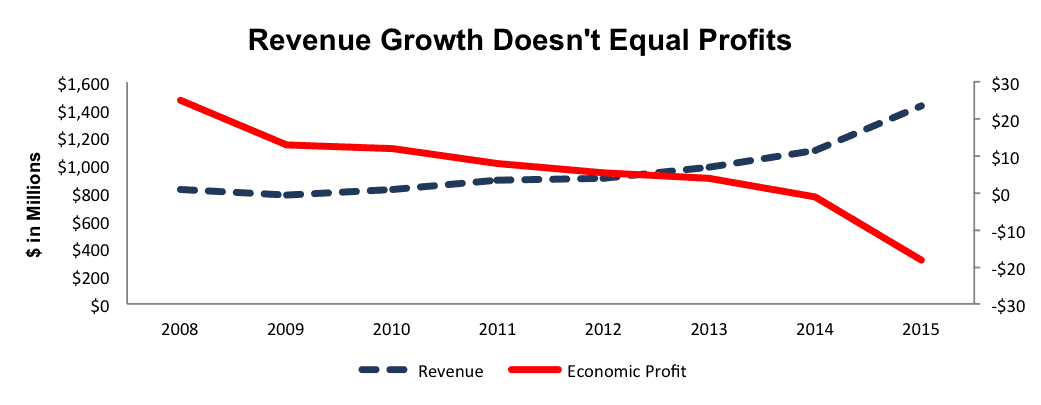Recap from January Picks
Our Most Attractive Stocks (-4.4%) underperformed the S&P 500 (-2.6%) last month. Most Attractive Large Cap stock HCA Holdings (HCA) gained 8% and Most Attractive Small Cap stock Lakeland Industries (LAKE) was up 14%. Overall, 17 out of the 40 Most Attractive stocks outperformed the S&P 500 in January.
Our Most Dangerous Stocks (-6.4%) outperformed the S&P 500 (-2.6%) last month. Most Dangerous Large Cap stock USG Corporation (USG) fell by 25% and Most Dangerous Small Cap Stock Xerium Technologies (XRM) fell by 26%. Overall, 24 out of the 40 Most Dangerous stocks outperformed the S&P 500 in January.
The successes of the Most Attractive and Most Dangerous stocks highlight the value of our forensic accounting. Being a true value investor is an increasingly difficult, if not impossible, task considering the amount of data contained in the ever-longer annual reports. By analyzing key details in these SEC filings, our research protects investors’ portfolios and allows our clients to execute value-investing strategies with more confidence and integrity.
10 new stocks make our Most Attractive list and six new stocks fall onto the Most Dangerous list this month. February’s Most Attractive and Most Dangerous stocks were made available to members on February 3, 2016.
Our Most Attractive stocks have high and rising return on invested capital (ROIC) and low price to economic book value ratios. Most Dangerous stocks have misleading earnings and long growth appreciation periods implied by their market valuations.
Most Attractive Stock Feature for February: VMware (VMW: $46/share)
VMware (VMW), an infrastructure virtualization company, is one of the additions to our Most Attractive stocks for February.
From 2007 to the last twelve months, VMware has grown its after-tax profit (NOPAT) by 21% compounded annually. This profit growth is shown below in Figure 1.
Figure 1: NOPAT Growth At VMW
Sources: New Constructs, LLC and company filings
Profit growth has occurred without harming VMware’s top quintile return on invested capital (ROIC), which is currently a top quintile 25%. VMW has earned a double digit ROIC every year dating back to 2007. Best of all, VMware’s economic earnings, the true cash flows available to equity holders have grown from $136 million in 2007 to $722 million over the last twelve months.
Impact of Footnotes Adjustments and Forensic Accounting
In order to derive the true recurring cash flows, an accurate invested capital, and a real shareholder value, we made the following adjustments to VMware’s 2014 10-K:
Income Statement: we made $122 million of adjustments with a net effect of removing $32 million (<1% of revenue) in non-operating expenses. We removed $77 million in non-operating expense, and $45 million in non-operating income.
Balance Sheet: we made $8.3 billion of adjustments to calculate invested capital with a net decrease of $7.7 billion. The largest adjustment was the removal of $7 billion in excess cash. This adjustment represented 62% of reported net assets.
Valuation: we made $9.2 billion of adjustments with a net effect of increasing shareholder value by $4.9 billion. The largest adjustment, apart from excess cash, was the removal of $2.1 billion due to the fair value of total debt, which includes $555 million in operating leases. This adjustment represents 10% of VMware’s market cap.
VMware Is Significantly Undervalued
Investors have ignored the fundamental strength VMware has been building towards as the stock is down 40% over the past five years. We think the stock is undervalued. At its current price of $46/share, VMW has a price-to-economic book value (PEBV) ratio of 1.0. This ratio means that the market expects VMware’s NOPAT to never meaningfully grow from current levels, despite a history of double digit NOPAT growth. If VMW can grow NOPAT by just 11% compounded annually for the next decade, the stock is worth $73/share today – a 59% upside.
Most Dangerous Stock Feature: Matthews International (MATW: $47/share)
Matthews International (MATW), an industrial and consumer goods/services company, is one of the additions to our Most Dangerous stocks for February.
Matthews International was once a profitable company, with positive and increasing economic earnings, but that has not been the case since 2008. Despite growing revenue at 8% compounded annually since 2008, Matthews International’s economic earnings have declined from $25 million in 2008 to -$34 million over the last twelve months.
Figure 2: Beware Revenue Growth That Lacks Profit
Sources: New Constructs, LLC and company filings
Since 2008, Matthews International ROIC has declined from 12% to a bottom quintile 5% over the last twelve months. The company’s NOPAT margins have declined from 11% to 7% over this same time as well.
Forensic Accounting Reveals Overstated EPS
In order to derive the true recurring cash flows, an accurate invested capital, and a real shareholder value, we made the following adjustments to Matthews International’s 2015 10-K:
Income Statement: we made $133 million of adjustments with a net effect of removing $46 million in non-operating expenses (3% of revenue). We removed $89 million related to non-operating expenses, including $46 million in hidden non-operating items, and $44 million related to non-operating income.
Balance Sheet: we made $422 million of adjustments to calculate invested capital with a net increase of $56 million. One of the most notable adjustments was $150 million (8% of net assets) related to other comprehensive income.
Valuation: we made $1.2 billion of adjustments with a net decrease to shareholder value of 1.1 billion. The largest adjustment was the removal of $953 million in total debt, which includes $39 million in off balance sheet operating leases. This adjustment represents 60% of Matthews International’s market cap.
MATW Has Large Downside Risk
Despite the declining fundamentals, MATW is up 28% over the past five years, which has left shares significantly overvalued. To justify its current price of $47/share, Matthews International must grow NOPAT by 9% compounded annually for the next 18 years. Keep in mind this expected growth rate is three times the annual NOPAT growth Matthews has achieved since 2008.
A more realistic scenario reveals the downside risk embedded in MATW. If Matthews International can grow NOPAT by 4% compounded annually for the next decade, the stock is only worth $18/share today – a 62% downside.
Disclosure: David Trainer and Kyle Guske II receive no compensation to write about any specific stock, style, or theme.

